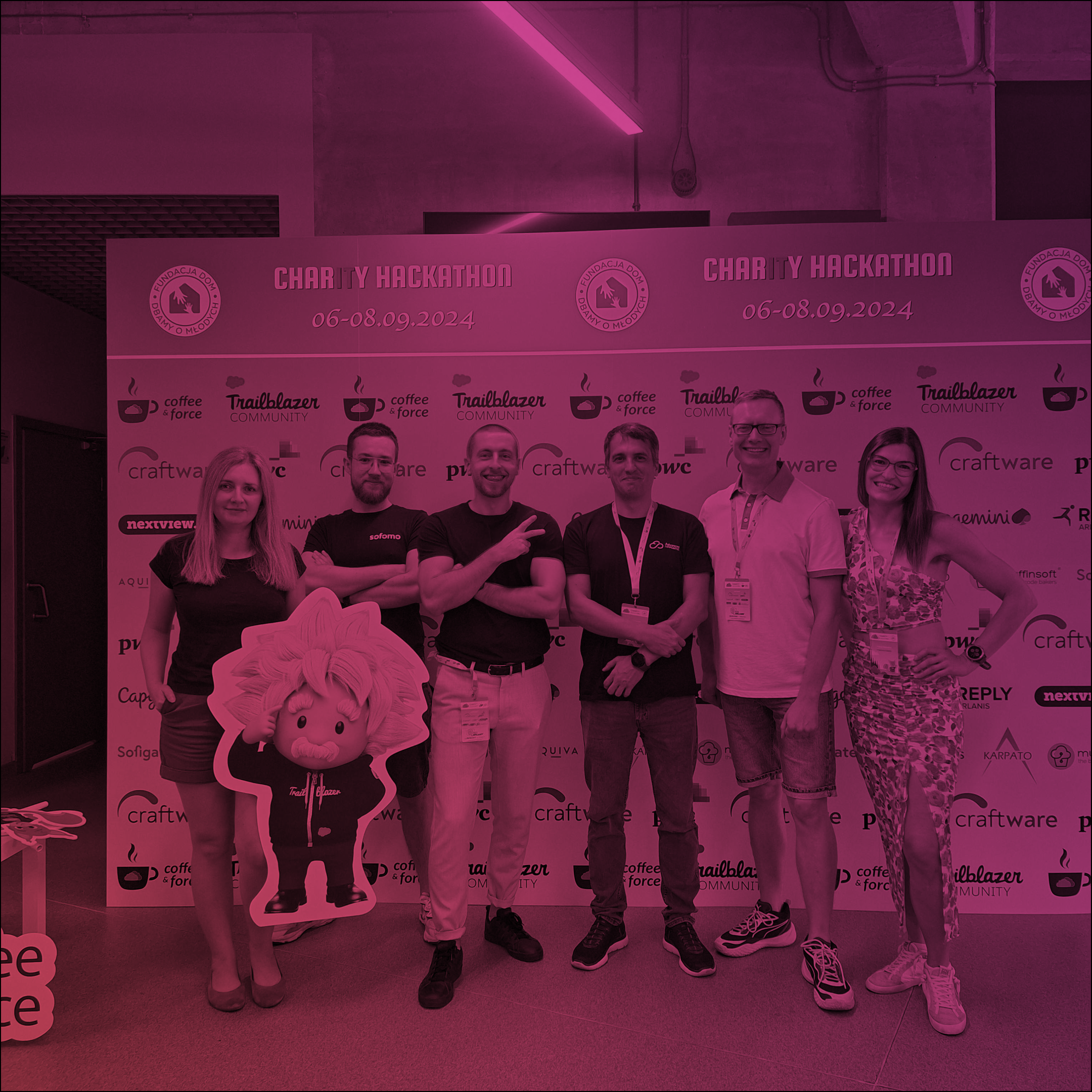How to Start a Nonprofit Organization and Manage It Efficiently with Salesforce
Starting a nonprofit is exciting but it’s also messy, bureaucratic, and, at times, overwhelming. Most founders enter the sector with passion… and quickly discover that passion alone doesn’t get you tax-exempt status, fundraising systems, or a website your beneficiaries can actually use. The most common frustrations appear immediately: no clear structure, no automation, no donor tracking, and spreadsheets everywhere.
This guide breaks down how to start a non profit organization from idea to fully operational entity, and goes a step further. You’ll learn the practical legal steps, the hidden pitfalls first-time founders face, and, most importantly, how modern nonprofits operate efficiently using Salesforce. From membership management to event fundraising and digital community engagement, technology determines whether a nonprofit thrives or struggles.
Why Digital-First Nonprofits Grow Faster
Launching a nonprofit in 2025 is radically different from 10 years ago. The sector became more competitive, more transparent, and more data-driven. Donors want proof of impact, regulators demand compliance, and beneficiaries expect the same digital experience they get from modern commercial apps.
Most organizations begin with the right intention but the wrong infrastructure. They rely on spreadsheets, Gmail folders, fragmented tools, and manual processes that quickly kill productivity. Studies show that nonprofits lose 20–30% of operational capacity due to poor systems, data silos, and manual coordination. The smart nonprofit flips that statistic by investing in unified data and automation from day one, not as an afterthought. Below we walk through actionable steps, technology choices, and bold operational moves you can implement immediately to build a resilient organization.
Seven Core Steps: How to Start a Non Profit Organization
Step 1: Nail the mission, model and measurable outcomes
Craft a short one-line mission and a one-paragraph “what success looks like in 18 months”. Decide which revenue mix you will chase (donations vs grants vs earned income vs membership dues). Frame 3 primary KPIs (e.g., members, recurring revenue, volunteer hours) and three operational guardrails (budget burn, data hygiene, minimum tech stack).
Step 2: Compliance & governance (legal early wins)
Register your legal entity, appoint an initial board, and file for tax-exempt status where relevant. Even if you start as a community project, formalize roles and approval workflows so fundraising platforms and grantors will work with you.
Every country has slightly different steps, but it typically includes:
- Articles of Incorporation
- Bylaws
- Board structure
- Mission statement
- Tax-exempt application
For U.S. readers: The IRS publishes simplified checklists for 501(c)(3) registration. (Source: https://www.irs.gov/charities-non-profits/applying-for-tax-exempt-status)
For UK/EU nonprofits: Charity Commission guidelines (https://www.gov.uk/government/organisations/charity-commission)
Step 3: Finance & basic ops
Open a bank account, set up basic accounting, and define an approval policy for spending. Early bookkeeping discipline prevents big headaches when you start taking donations or applying for grants.
Step 4: Audience, value prop, and initial offer
Define your target audience segments (donors, members, volunteers, beneficiaries), and for each create a short value statement: Why should they engage? What immediate benefit will they receive? Build one core offer (e.g., membership tier, volunteer program, inaugural event) and a simple signup funnel.
Step 5: Technology foundation (start with one source of truth)
Pick a CRM and commit to it as your single source of truth. Use it to record contacts, donations, memberships, volunteer activities, event attendees, communications, and program metrics. This is the step that separates ambitious founders from the tired, overworked ones.
Practical implementation: For nonprofits, Salesforce Nonprofit Cloud is purpose-built to centralize donors, members, events and program outcomes. If you want to get moving quickly with a membership-first model and event capabilities, check out Advanced Communities’ solutions for nonprofits that extend Salesforce with ready-made features.
Step 6: Minimum viable digital experience (MVE)
Instead of aiming for a perfect website from day one, focus on a minimum viable experience: a clean landing page, a donation form, and a members’ signup path. The key is to capture data efficiently and integrate it seamlessly into your CRM for follow-up. A site built on Salesforce Experience Cloud is perfect for this because it natively connects every interaction: donations, sign-ups, event registrations, directly to your Salesforce ecosystem. This eliminates manual data entry, ensures accurate reporting, and provides a professional, secure, and scalable platform that can grow with your nonprofit as programs, memberships, and fundraising campaigns expand. With Experience Cloud, your “MVE” is already smart, connected, and ready to deliver results. We’ll dive into this in more detail later.

Step 7: Launch, measure, and iterate
Run your first campaign (event, fundraising challenge, membership drive), measure against the KPIs, and run a 30-day retrospective. Use small experiments (A/B email subject lines, 2 price points for membership) and keep what works.
Choosing the Right Technology (and Why Salesforce Wins)
Let’s shift from the legal to the operational. Once your nonprofit is legally recognized, the real work begins: running it like a high-performing organization.
Mastering how to start a non profit organization doesn’t end with paperwork. True success comes from learning how to manage it long-term: consistent fundraising, donor engagement, community communication, volunteer management, and event execution.
Common operational mistakes first-time nonprofits make
- Running donor data in Excel
- Hosting events with no follow-up strategy
- Manual membership renewals
- No automation for communications
- Poor reporting (or none at all)
- Relying on volunteers instead of systems
- Underestimating the importance of a good website
Salesforce solves each of these operational headaches—and this is exactly why so many organizations choose Salesforce for nonprofits as their digital backbone. It provides:
- A unified database for donors, members, volunteers and organizational contacts.
- Rich automation with Process Builder, Flow, and now AI-enhanced features for segmentation and personalization.
- Experience Cloud to deliver members-only portals, event microsites, and resource libraries.
- An ecosystem of apps and integrators (including Advanced Communities’ product suite) that plug in without fragile point-to-point integrations.
If your first digital move is to centralize contact and transaction data into Salesforce, everything else becomes easier: personalization, reporting, renewals, impact measurement.
Building Your Nonprofit Community on Experience Cloud
A nonprofit without a website is invisible. A nonprofit with a bad website looks untrustworthy.
Salesforce Experience Cloud provides:
- Secure login areas
- Volunteer portals
- Membership directories
- Donation pages
- Program pages
- Event calendars
- Community spaces for beneficiaries
Experience Cloud turns passive website visitors into active community participants. For nonprofits, that means:
- Personalized member dashboards showing dues status, upcoming events, and recent donations.
- Self-service for updating information, downloading receipts, and tracking volunteer hours.
- Private groups for program cohorts, committees, or regional chapters.
- Resource hubs (policy docs, recordings, asset libraries) for beneficiaries and staff.
Why custom Experience Cloud sites from Advanced Communities are ideal
Advanced Communities specializes in Experience Cloud website creation for nonprofits, so you can launch a polished portal without reinventing the wheel. That portal can host member/donor directories, volunteer opportunity boards, charity events, programs, community projects and more – all synced with Salesforce for accurate reporting and automation. You can also embed your public Experience Cloud pages directly within your main website (e.g., WordPress, Drupal, Joomla, etc) if needed.

Most nonprofits can’t afford large-scale custom development. AC delivers:
- Fast implementation
- Beautiful UX/UI
- Integrations with AC apps
- Donation forms
- Program directories
- Mobile responsive layouts
- Community engagement features
Managing Members, Donors & Events Efficiently with AC Solutions
This is the core of operations: once your nonprofit is running, you must engage people effectively. Below is where we tie the apps directly to day-to-day use cases.
Membership Management with AC MemberSmart
Memberships are not just “subscriptions”, they are relationships. AC MemberSmart modernizes and automates that relationship.
Key capabilities include:
- Automated renewals
- Tiered memberships
- Family & group memberships
- Online applications & self-service updates
- Payment processing
- Membership directories
- Experience Cloud member portal
The system eliminates 80% of the manual admin work nonprofits deal with during renewal season.

Event Management with AC Events Enterprise
Events remain the lifeblood of nonprofit fundraising. But running them manually is exhausting.
AC Events Enterprise helps nonprofits:
- Publish event pages on Experience Cloud
- Sell tickets
- Manage speakers, sponsors, and agenda
- Track attendance
- Integrate with Salesforce campaigns
- Collect donations on event checkouts
- Automate follow-up emails and segmentation
Case study DFSO block
Automated fundraising with AC Fundraising
Nonprofits can supercharge donations and donor engagement without extra admin work. AC Fundraising enables:
- Creating targeted native peer-to-peer and standard fundraising campaigns quickly
- Setting up recurring donation programs
- Tracking of all-time donations and donation amounts for each donor
- Tracking campaign performance in real time
- Automating thank-you emails and follow-ups
- And more…
If fundraising is your top priority, check out this Salesforce for fundraising toolkit.
Conclusion
Starting a nonprofit requires equal parts heart and systems. By focusing early on a unified CRM, membership-first thinking, and automation, you dramatically increase the odds of mission success. Salesforce gives you the backbone and Advanced Communities provides targeted, nonprofit-ready extensions like AC MemberSmart, AC Events Enterprise, AC Fundraising and fundraising modules that let you operate professionally from day one.
To recap: craft a clear mission, centralize data in Salesforce, launch a minimum viable portal, automate core donor and member flows, measure the right KPIs, and iterate. That’s how you start a nonprofit organization that’s built to last — and built to scale.
Ready to accelerate your nonprofit launch with Salesforce and Advanced Communities? Book a demo with our team to see tailored configurations for members, events and fundraising.
FAQ
How do I start a nonprofit organization with no money?
Start by validating your mission, forming a board, and filing legal documents yourself instead of hiring lawyers. Many countries allow nonprofits to apply for grants even before full operational launch. Salesforce for nonprofits includes discounted tools that help you begin with minimal upfront investment.
How do non-profit owners make money?
Nonprofit founders don’t “own” the organization. They can receive a salary if they take an operational role (executive director, manager, program lead), but all earnings and assets belong to the organization—not individuals.
What requirements are needed to be a non-profit organization?
You need a mission serving public benefit, a board of directors, bylaws, incorporation documents, and compliance with your local charity commission or tax authority. Transparency, reporting, and governance rules vary by region.
How much does it take to start up a non-profit?
Start-up costs vary widely: in some jurisdictions you can begin for under €500 (DIY registration, volunteer help), while more formal launches with legal counsel, branding, and tech setup can significantly increase the cost. Some founders start with almost nothing thanks to grants, volunteers, and discounted nonprofit tools like Salesforce NPSP.





